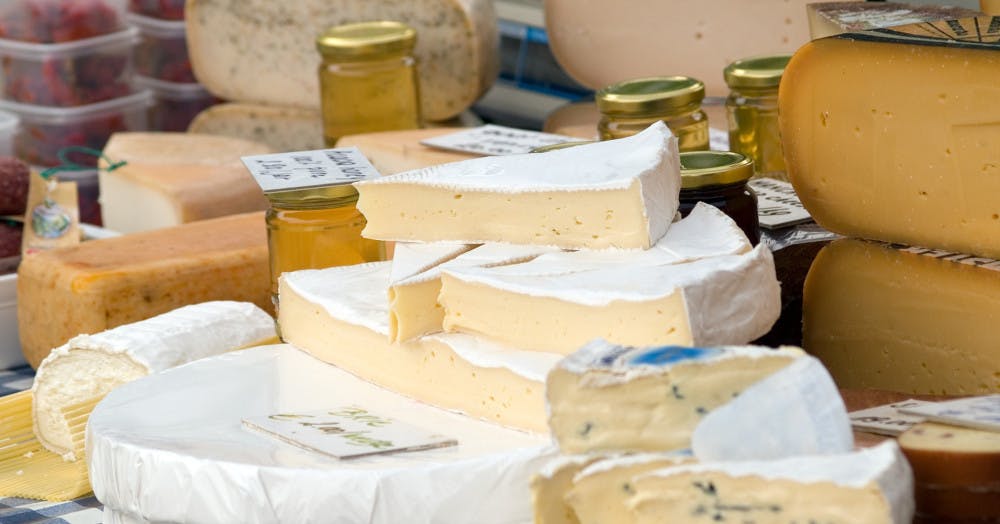LGC ASSURE Insights Edition 8 - November 2022
Ensure you are on the right side of consumers and regulation with proper labelling
9 December 2022

Share this article
Labelling – it’s much more than a name
Welcome to the eighth edition of LGC ASSURE Insights, a free digital newsletter to support your food safety management journey. This is the latest in the series that explore diverse topics including sustainability, special dietary needs, food safety certification and many more so do have a look at some of the previous editions. You can sign up to receive future editions here.
Last month’s edition focussed on packaging and this month the focus is what’s written on it, namely the labelling. Labelling performs many functions including informing consumers about the product itself, its ingredients, origin, durability, hazards and how to use or consume it safely. As is customary in the newsletter, I will start with a selection of topical issues and incidents happening across the world.
Food recall highlights of the month, November 2022
Listeria monocytogenes contamination remained prominent as a cause of a variety of recalls including a large recall of soft ripened cheese linked to cases of listeriosis including Camembert, Brie and associated products containing them such as a fruit and cheese platter. Other recalls included those associated with ready-to-eat vegetables, smokedsalmon, Enoki mushrooms, mozzarella and cheddarcheese, canned olives in rapeseed oil, readymeals, and in chicken ‘frankfurter-type’ sausages.

Salmonella spp. was the cause of recalls in products such as tahini, dried mushrooms, cheese flavouredprotein chips/crisps and salami. The potential risk of botulism resulted in the recall of an ambient Chai(tea) mixture and the possible association with a Shiga toxin-producing E. coli (STEC) outbreak prompted the recall of a falafel product.
Mis-packing of a chicken Kiev into the packaging of a non-milk containing variant resulted in the undeclared presence of milk and, similarly, a noodle soup vegetable gyoza was recalled due to the mis-packing of a prawn variant resulting in a risk to those with an allergy to crustaceans. The mispacking of a peanut containing cookie into the packaging of a salted caramel cookie led to a recall in the USA.Failure to include known allergens on the label resulted in the recall of two sauces in the USA due to the presence of soy. This occurred during a redesign of the label where the known allergen was left out. Similarly, a recall of in-store preparedchicken salad occurred due to cashew nuts not being declared on the ingredient statement.
Incorrect recipe management resulted in the recall of vegan drumsticks due to the inadvertent addition of egg. Use of ingredients that unknowingly contained an allergen resulted in recalls of a sesame seed mix and a sunflower seed mix product (cashew nuts) and a variety of fruit pies (soy).
Chemical recalls were varied and included the presence of sanitising solution in a fruit yogurtpouch drink, dried seaweed with excessive iodine, one brand of rice cakes with the mycotoxin zearalenone and another brand of rice cakes with aflatoxin. A dilutable fruit drink (squash) was recalled due to the mislabelling of a sugar containing variant with a ‘No Added Sugar’ label and excessive levels of cadmium resulted in the recall of squid arms.
Although not a food product, Gambia and Indonesia recalled cough syrups associated with a large number of fatalities in young children. Excessive levels of diethylene glycol and ethylene glycol were detected in four products manufactured at a single plant in India. Nearly 70 deaths were reported in Gambia and 133 in Indonesia due to acute kidneyinjury.
Plastic was the main cause of recalls due to physical contamination including a vegetable readymeal, cookie dough, iced coffee and crisps although metal contamination resulted in the recall of a mealreplacement ‘shake’ and flavoured whey protein.
Global food safety – for the next decade
The World Health Organisation adopted its long signalled global strategy for food safety 2022-2030 at the 75th World Health Assembly. The strategy has five priorities that focus on the development of “cost-effective food safety systems with coordinated governance and adequate infrastructures”. It is heavily focussed on governments, national food control programmes and supportive frameworks. The priorities include a focus on food legislative frameworks, coordination of competent authorities that manage national food control systems, development and implementation of fit-for-purpose standards and guidelines. The strategy talks about strengthening compliance, verification and enforcement, food monitoring and surveillance programmes along with establishing food safety incident and emergency response systems.
This month’s special feature: Labelling
The label on a product has a multitude of purposes ranging from marketing the product through to the communication of legislative requirements but the historical drivers of labelling were principally to assure the consumer about the authenticity and origin of the product.
Access Participate
This content is exclusive to users with access to Participate
Certificated sites, certification bodies and BRGCS approved training partners, auditors and consultants can request access to our online library, Participate. To be able to access Participate content you must sign up for a free account on the LGC Assure platform and then request access to Participate.
Find out more